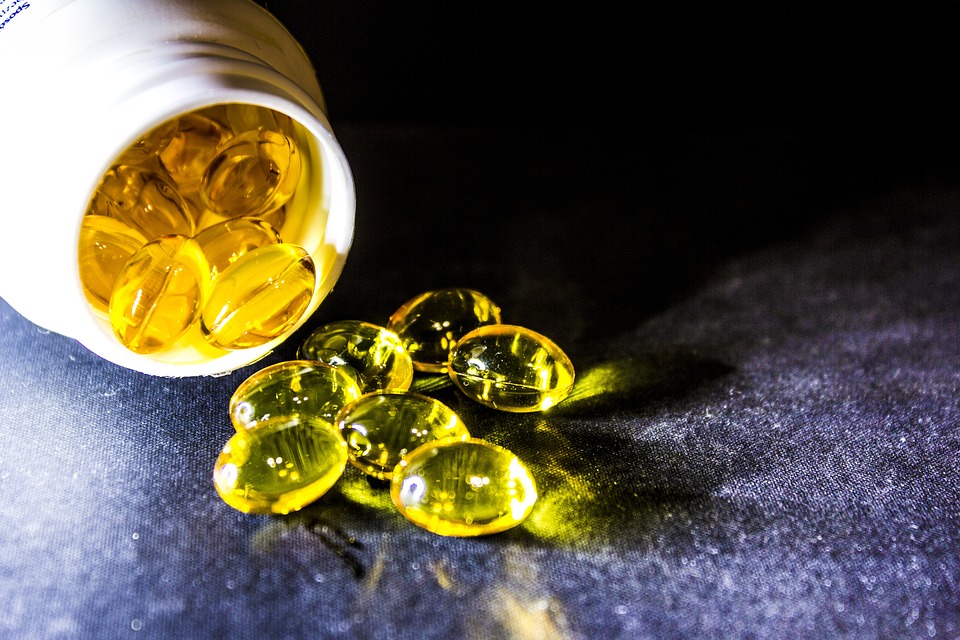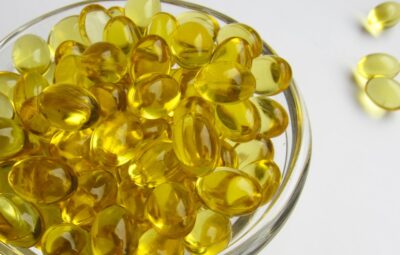Osteoarthritis is a condition that causes pain, disability, and limitations in movement around the world. It is ranked as the 11th highest contributor to disability and the 38th highest in terms of years of life lost to disability. The main focus of treatment is still managing pain, which is the most important thing to patients. Although pain control is improving, it is still not effective for half of the patients who do not have surgery. Despite the severity of the disease, there are no currently approved medications that can slow the progression of OA.
Osteoarthritis is a heterogeneous, complex disease with multiple phenotypes. There are few treatments that have been shown to be effective in reducing pain for those suffering from Osteoarthritis and slowing down changes in the joint’s structure. This may be due, in part, to the fact that everyone is treated as if they have the same underlying condition. The effectiveness of treatments can be increased by choosing study populations that have specific characteristics that make them likely to respond to targeted treatments. One such phenotype is an inflammatory phenotype.
Although osteoarthritis is typically not considered an inflammatory condition, localized low-grade inflammation is an important factor in its development. Inflammatory patterns have been observed both early and late in the disease process. In OA, both systemic and local inflammatory changes have been demonstrated in the affected joint. There is now evidence that suggests that inflammation may help to clinically distinguish different types of Osteoarthritis.
High levels of inflammation (as seen through high levels of hsCRP) are observed in people with osteoarthritis compared to those without the condition. This inflammation is thought to be caused by synovial inflammatory infiltration, and the degree of infiltration is positively correlated with the level of hsCRP. HCRP levels are associated with symptoms and disease markers. A meta-analysis showed that higher HCRP levels are associated with greater pain. Longitudinal data from our center showed that higher HCRP levels are associated with less physical function and decreased cartilage volume. This means that inflammation throughout the body predicts both pain and structural damage in Osteoarthritis.
Inflammation also occurs locally within joints. Anti-inflammatory cytokines, such as IL-4, IL-10, and IL-13, are produced by synovium and chondrocytes and contribute to the progression of cartilage protection. Inflammation that is localized presents itself as either effusion (too much synovial fluid within the joint space) or synovitis (thickening of the synovium). These conditions are associated with pain, including new pain and pain that gets worse over time. Effusion-synovitis can predict future structural changes in the joints, such as cartilage defects, bone marrow lesions, and increased cartilage loss. These changes can lead to the need for joint replacement surgery. The cascade of inflammation is thought to play a role in the deterioration of knee structure in osteoarthritis, so stopping this cascade may help improve the condition.
Osteoarthritis is a condition characterized by high levels of inflammation. While oral prednisolone or biologics can be used to target this inflammation, these treatments are expensive and have too many side effects for widespread use. Safer treatments for reducing inflammation are needed.
Fish oil is effective in reducing pain, morning stiffness, and the number of painful and/or tender joints in people with rheumatoid arthritis (RA). It is also effective in reducing NSAID consumption. This therapy is in addition to standard RA therapies and is effective in reducing the risk of treatment failure and increasing the rate of remission. There is limited evidence on the effectiveness of marine-sourced oils for treating Osteoarthritis. In other words, while diet may play a role in synovitis and cartilage damage, there is no real evidence that marine oils help with Osteoarthritis pain. This is likely due to the fact that most trials on this topic are of poor quality. Canola oil/low-dose fish oil may be effective. Oil from Antarctic krill may be more effective than other marine oils in people with Osteoarthritis. Like fish oil, it is high in eicosapentaenoic acids (EPA) and docosahexaenoic acid (DHA), although the chemical structures of the fatty acids differ (phospholipids, rather than triacylglycerol or fatty acid ethyl esters); but unlike fish oil, it also naturally contains antioxidants (predominantly astaxanthin]). This means that you don’t have to take as much krill oil to get the same benefits as you would from fish oil. In scientific studies that compare the effects of krill oil to fish oil, krill oil has been shown to be more effective in reducing inflammation and improving arthritis symptoms in mice. If mice are transgenic for human TNF-α, then both fish oil and krill oil can help improve their plasma cholesterol levels. However, krill oil has other benefits as well and is better at reducing markers of fatty acid oxidation. This means that krill oil is more effective at reducing inflammation and oxidation than fish oil, based on what we know from animal studies.
The following text is a paraphrase of the information above. The two randomized controlled trials that included people with osteoarthritis have demonstrated that daily krill oil (300 mg or 2 g) is effective in reducing some aspects of knee pain, functional impairment, and stiffness. There are some methodological limitations to the RCTs performed on krill oil, such as short duration, lack of documentation of adverse effects, no imaging data to determine the effect of krill oil on knee structures, and omission of patients with evidence of inflammation.
KRILL OIL AND FISH OIL: DIFFERENT MECHANISMS, GREATER BENEFIT
Krill oil and fish oil are both healthful marine oils from animals that live in the ocean. Both salmon and mackerel are rich in omega-3 fatty acids, which have anti-inflammatory properties.
What distinguishes krill oil from fish oil? Some people need to supplement with both because it is essential for their health.
There are three important differences between these two marine oil products. Marine oil products are similar, but there are three important differences that you need to understand in order to optimize your fight against dangerous inflammatory processes.
- The first point of differentiation is the intended benefit and dosage. Fish oil is widely recognized for promoting cardiovascular health and favorably affecting blood lipids. Fish oil taken in sufficient doses lowers triglycerides and favorably modifies other vascular risk factors such as small, dense LDL.17-20 Optimal dose for most people of EPA is 1,400 mg, and DHA is 1,000 mg. Krill oil also provides EPA and DHA (in the phospholipid forms), but it does not provide them in levels high enough for optimal cardiovascular protection.
- The second point of differentiation is the site of action of the two marine oils. Fish oils favorably modulate inflammatory cytokines circulating in the blood, thereby reducing total body inflammation (that’s in part how they exert their beneficial cardiovascular effects).21 Krill oil, on the other hand, has beneficial effects locally in the joint. In one study, krill oil, but not fish oil, reduced infiltration of inflammatory cells into the joint and joint-lining tissues, a vital effect in reducing pain, swelling, and loss of function in arthritis.16 In that same study, fish oil, but not krill oil, modulated blood levels of inflammatory cytokines. This study provides a neat picture of the complementary nature of these two marine oils.
- Purified fish oil concentrates are a more cost-effective way of obtaining high doses of EPA/DHA required to protect against a wide range of degenerative disorders. Just 300 mg a day of krill oil has been shown to relieve joint pain, whereas 2,400 mg of EPA/DHA are needed each day to provide the systemic benefits of EPA and DHA omega-3s. For comparison, one would need to take approximately 30 softgels containing about 300 mg of krill oil to obtain similar amounts of DHA as found in just two purified and concentrated fish oil softgels.
There are three important points that show why it is necessary to keep taking high doses of fish oil for heart protection and to prevent inflammation. Krill oil can also help with pain and stop joint damage.
Potent Anti-Arthritis Effects Observed in Humans
There have been many studies conducted on the effects of krill oil on human health, arthritis, and other joint-related conditions. These studies have yielded very positive results.
In a study, the effect of a krill oil extract was evaluated on patients with arthritis and chronic inflammation.
The first group took krill oil at a dosage of 300 mg per day, while the second group took a placebo. The levels of C-reactive protein (CRP, a measure of inflammation) and the widely used WOMAC arthritis score were determined on days 7, 14, and 30.
The WOMAC score is used to measure levels of pain and stiffness in patients with osteoarthritis. CRP levels were significantly lower in the krill-supplemented group after just 7 days and continued to drop over the course of the 30-day study. In contrast, CRP levels in the placebo group increased over the same period.
WOMAC severity scores dropped significantly on all three parameters for arthritis sufferers, which led to improvements that were sustained and experienced at each time point.
A new clinical trial has just been completed with an even more effective krill oil formulation. The new formulation contains several valuable additional ingredients, along with purified krill oil. The combination of these compounds was found to improve krill oil’s ability to relieve joint pain.
Astaxanthin Adds Anti-Inflammatory Potency
The second component of a new joint health formulation is astaxanthin, a pigment found in algae. Krill really enjoy these algae and get a lot of astaxanthin from them. While standard processing practices for krill oil generally result in the depletion of astaxanthin from the final product, this is, unfortunately, the case. The new krill and hyaluronic acid formulation is enriched with natural astaxanthin to improve its therapeutic effect and stability.
Astaxanthin is a powerful antioxidant and natural anti-inflammatory agent. It has been found to be helpful in reducing inflammation in chronic conditions such as arthritis.
Astaxanthin’s anti-inflammatory effects work through multiple pathways, which is always an important plus for natural supplements over single-targeted drugs. First, its antioxidant powers reduce levels of inflammation-causing tissue oxidation.35,36 Astaxanthin also reduces production and activity of several enzymes that manufacture inflammatory cytokines.36,37 Importantly, astaxanthin also reduces inducible nitric oxide synthase (iNOS), which is known to be an important inflammatory trigger in osteoarthritis.
Astaxanthin has additional, direct benefits on joint health. Astaxanthin also inhibits apoptosis, which is the programmed cell death that is a significant cause of cartilage loss in osteoarthritis. Additionally, it inhibits the destructive enzyme MMP-13, preventing the joint degradation seen in osteoarthritis.
Summary
There is a lack of effective treatments for arthritis that safely inhibit pro-inflammatory factors in the body.
A study that combined krill oil with hyaluronic acid and astaxanthin found that subjects in the active group reported less pain in less than three months, with 63% of them being entirely pain-free.
Krill oil is believed to have anti-inflammatory and anti-oxidative effects. Oxidative stress and inflammation have important roles in Osteoarthritis pathogenesis, and krill oil therapy may be beneficial in treating OA. Krill oil supplements reduced inflammation by 30% after just 30 days, compared to a 25% increase in inflammation for those who took a placebo. The findings of this study may have clinically important implications. Increased levels of inflammation are associated with increased loss of tibial cartilage volume. This means that MRI-assessed effusion/synovitis is being used as a target for treatment in trials. A clinical trial that involved giving low doses of oral prednisolone to people with painful hand osteoarthritis found that there was no association between the amount of effusion-synovitis (as assessed using MRI scans) and the participants’ pain levels (as assessed using a VAS). However, the trial did find that effusions tended not to change over the course of the treatment and did not appear to predict how well the treatment would work.
Knee Osteoarthritis is a serious public health problem that is not well understood and has no medications that can stop it from getting worse. Small trials have suggested that krill oil may help improve knee pain and could possibly reduce inflammation throughout the body in people who have Osteoarthritis. If krill oil is found to be effective in reducing knee pain and effusion size in people with knee osteoarthritis, it is likely that this information will be quickly put into clinical practice, as krill oil is already popular and available to purchase without a prescription, despite there being limited evidence of it actually being effective.







